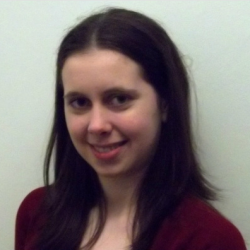Four days after Christmas, the holiday spirit was going strong in Glasgow’s Royal Concert Hall for a fun afternoon of Music & Dance from the Ballet – more music than dance, as it was to turn out. Conductor and maître d’, Benjamin Pope, guided an enthusiastic audience through an assortment of the most famous ballet highlights as well as a few pieces from lesser known ballets.
We began with a selection from a Christmas favourite, Tchaikovsky’s The Nutcracker, and it was clear that by the end of the lively Trepak the audience was hooked – and we hadn’t even seen any dancing yet. It wasn’t until after a few pantomime quips from Benjamin Pope that we were treated to our first dance performance, Clara's Pas de Deux with the Nutcracker. The red and gold nutcracker costume and sparkling white tutu added to the Christmassy atmosphere and I was very impressed by the shoulder lifts during the climax, when the lower horns enter.
With over fifty members of the Scottish Concert Orchestra (including one harpist) on the very small stage, there was little room left at the front for the four dancers from the Russian State Ballet of Siberia to perform. This was a real pity because it severely limited the choreography that could be showcased. There was an abundance of difficult pirouettes and crowd-pleasing lifts, but by the end of the first half even they had lost their appeal and there was a sense of having seen it all before.
But what the dancers lacked in material, they made up for with their impressive technique and their acting ability. The saucy Pas de Deux from Don Quixote was particularly expressive, with haughty Spanish poses and playfully seductive glances. The fouetté turns were well executed and became another crowd favourite, but they were more polished during the encore from Swan Lake, where both female dancers danced them one after another.
One of the most unique aspects of Sunday afternoon’s performance was, for me, the emphasis placed on the music itself. Often when attending a ballet, I find myself so intent on what the dancers are doing that I don’t listen to the music as I would if I were at concert. But the musical accompaniment was the main focus of Music and Dance from the Ballet, with the dancers occasionally added as a pretty spectacle to entertain the audience. Only seven of the eighteen dances the orchestra played even included the dancers.
An orchestral version of Chopin’s Waltz in C Sharp minor, originally composed for piano, was written for a ballet named Chopiniana which was later revised and extended to become the first non-narrative ballet, Les Sylphides. Having never seen either of these ballets, I was fascinated by how the piano music that I was familiar with had been arranged to suit a full orchestra. The dancers were dreamy, in ghostly white, and beautifully light on their feet. Even with very little distance between the audience and the stage, there was no noise from the ballerina’s pointe shoes and the male dancer’s leaps were pleasingly high. The skill of the dancers was obvious and it was a shame that they were so limited by the stage size.
The music and dance came together well in Saint-Säens’s The Dying Swan. John Davidson played the melancholy melody on cello accompanied by an inspired solo dance performance with beautiful ports de bras. The ballerina created the shape of a swan with her body, with her arms acting as the swan’s neck and hands clasped over each other to form the swan’s head. Her final “death” was both moving and technically proficient.
The audience left happy having enjoyed a festive spectacle in the interim between Christmas and New Year. But, for me, although it was an entertaining afternoon, watching snippets from a range of ballets is no substitute for the full experience.


